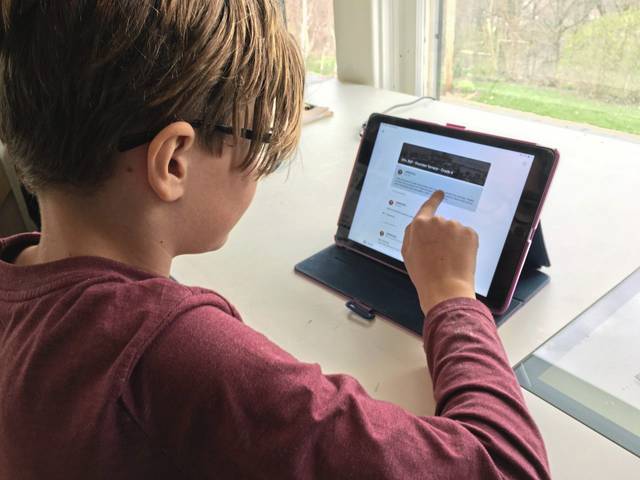When fear of the coronavirus separated K-12 students from school buildings, the need to continue teaching brought school officials in Westmoreland County’s far-flung school districts closer than ever.
For the last two weeks, every morning at 8 a.m., top administrators from the county’s 17 school districts, three career and technical centers and its sole charter school, have been meeting in a teleconference coordinated by the Westmoreland Intermediate Unit.
“Everyone is cooperating and collaborating for the long-run,” said Intermediate Unit Executive Director Jason A. Conway.
He said school officials are learning from one another as they tackle the task of providing education and resources to 40,000 Westmoreland County students and families in what Gov. Tom Wolf Monday said is now an indefinite school shutdown.
Wolf said schools across the state are crafting plans to deal with the prolonged shutdown.
“It’s a fluid situation,” said Deer Lakes School District spokesman Jim Cromie. “Right now, we are in the mindset that we can’t really afford to think any other way than being very adaptive to every new wrinkle that comes our way. This is just kind of the latest in a series of pretty big changes.”
In the Leechburg Area School District in Armstrong County, teachers are getting lessons to their students one way or another.
The district is doing remote learning through a combination of online teaching and take home work packets because a large proportion of the district’s 800 students do not have internet access.
“We’re giving the work packets to 100% of our students and there’s also additional resources that we have available online that if students and their families are able to access and do to supplement what they’re doing they can,” Nix said. “Students will have the option of doing things online or returning the packets.”
In Westmoreland County, collaborations is bearing fruit in the work of teachers like Brian Fleckenstein at Norwin High School.
Fleckenstein, who teaches a college writing course, said online instruction “is becoming more and more a part of brick and mortar (schools), so the transition is fairly smooth. ” At this point, it’s just trying to adapt content and material to online instruction, Fleckenstein said.
“The content is the same, it’s the delivery and presentation that now must be altered without the teacher physically there for clarification. There are so many great teachers out there doing great stuff that it’s been a great learning experience.”
Fleckenstein said the biggest challenge “is making sure the instruction is very clear and informative. It saves time in the end in follow-up questions.”
Conway said school leaders are sharing strategies developed by teachers like Fleckenstein. And they have embraced new technologies as they plot strategies to deliver continuing education throughout the shutdown.
“If I remember correctly, we have five times the number of Zoom accounts that were distributed pre-virus,” Conway said referring to the teleconferencing software that some schools are using for everything from meetings to student instruction.
The advantage of collaboration became starkly apparent early during the shutdown when schools were faced with the challenge of finding a way to return medicines that were stored in nurses’ offices and getting meals to students who relied on school lunches and breakfasts.
Now, they’ve moved on to other challenges.
At Norwin, school officials are planning to distribute one computer for every two students in a family.
About 5,000 of Norwin’s 5,300 students logged on for online instruction on Monday, said Natalie McCracken, assistant superintendent. Students were able to log on when it is most convenient for them to do so to complete the work assigned by then due date. The school district will contact families of students who have not logged on to make sure that they have the necessary devices and connectivity to participate in online instruction, McCracken said.
Another distribution of electronics there is scheduled for Tuesday .
Although each school faces different challenges, ranging from access to technology and communications to meeting the needs of English language learners and special education students, schools are learning from one another, Conway said.
Norwin teachers are focusing on core curriculum, and are allowing time for students and families to transition to an online environment, McCracken said.
“There is not a “one size fits all” plan, “Conway said.
“School districts will continue to work together on delivering education to all students with all of the resources at their disposal,” said Allegheny Intermediate Unit interim Executive Director, Rosanne Javorsky. “We recognize that this is a difficult time for students and parents; nevertheless, it is important that we continue to stay the course for the safety and security of our communities.”













